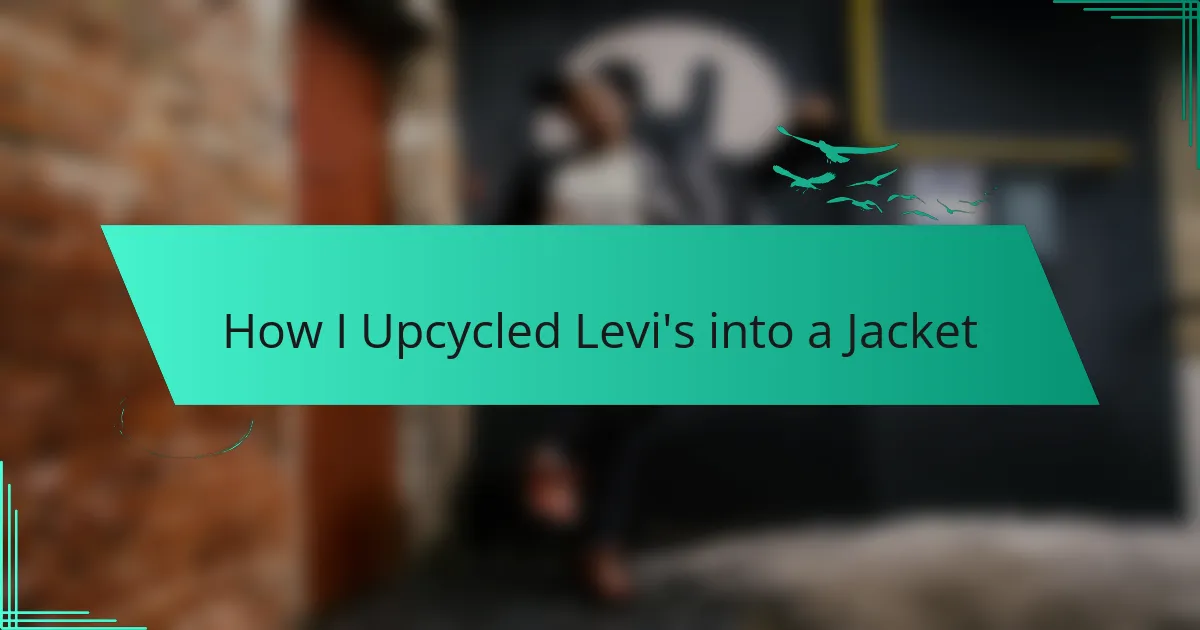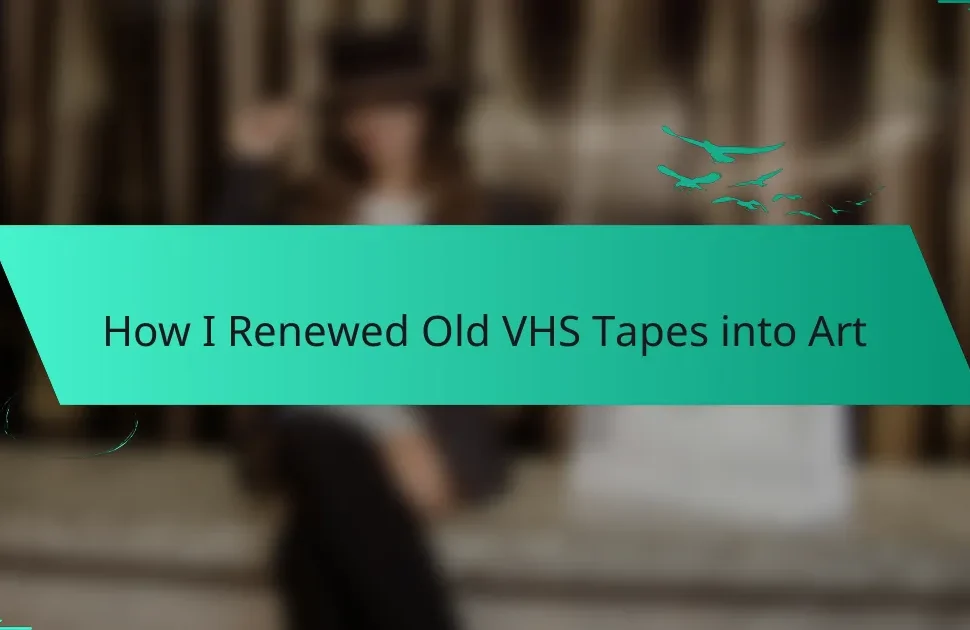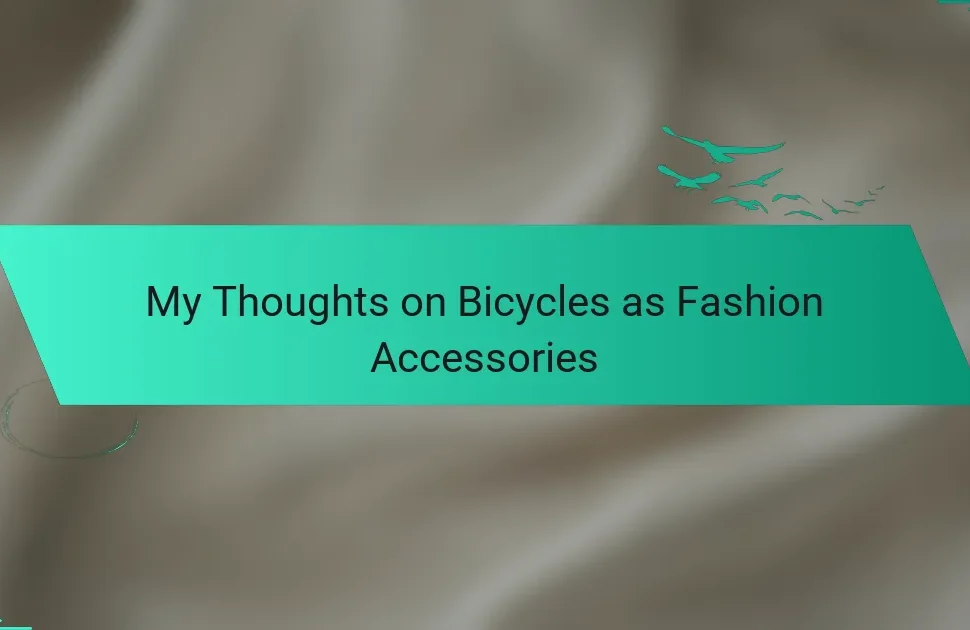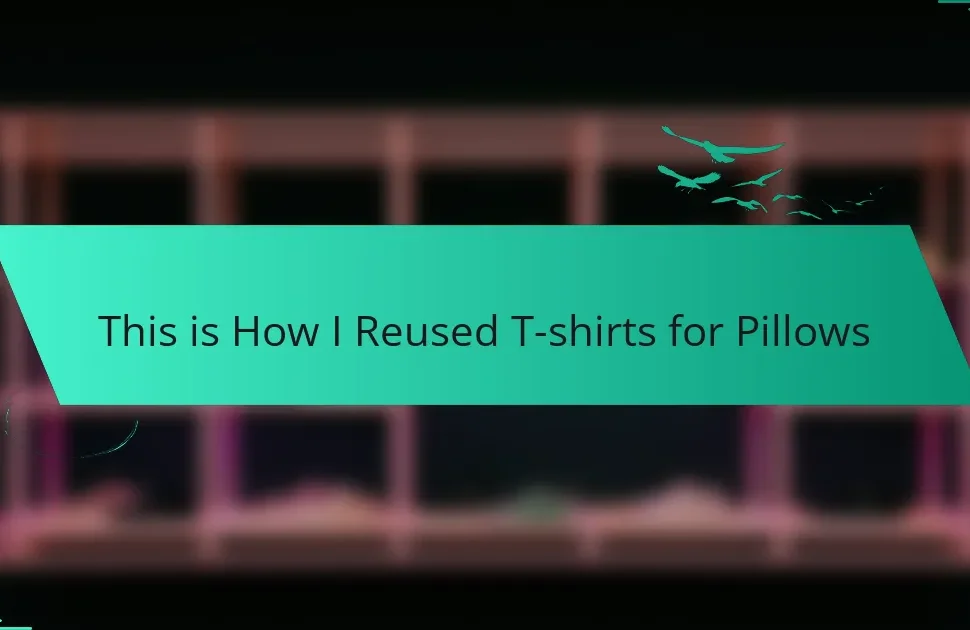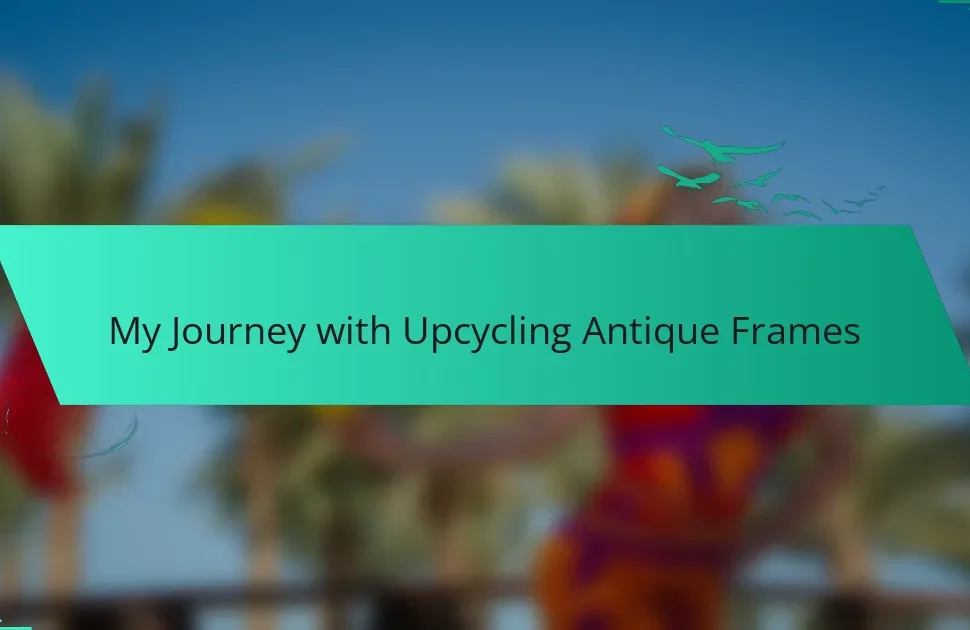Key takeaways
- Upcycling in fashion turns old clothing into unique, wearable items, promoting creativity and sustainability.
- Benefits of upcycling include waste reduction, personal expression, and cost savings compared to buying new clothes.
- Vintage fashion trends are re-emerging, often revitalized through upcycling, allowing for fresh interpretations of classic styles.
- Essential tools for upcycling, such as seam rippers and fabric scissors, enhance the creative process and ensure successful projects.
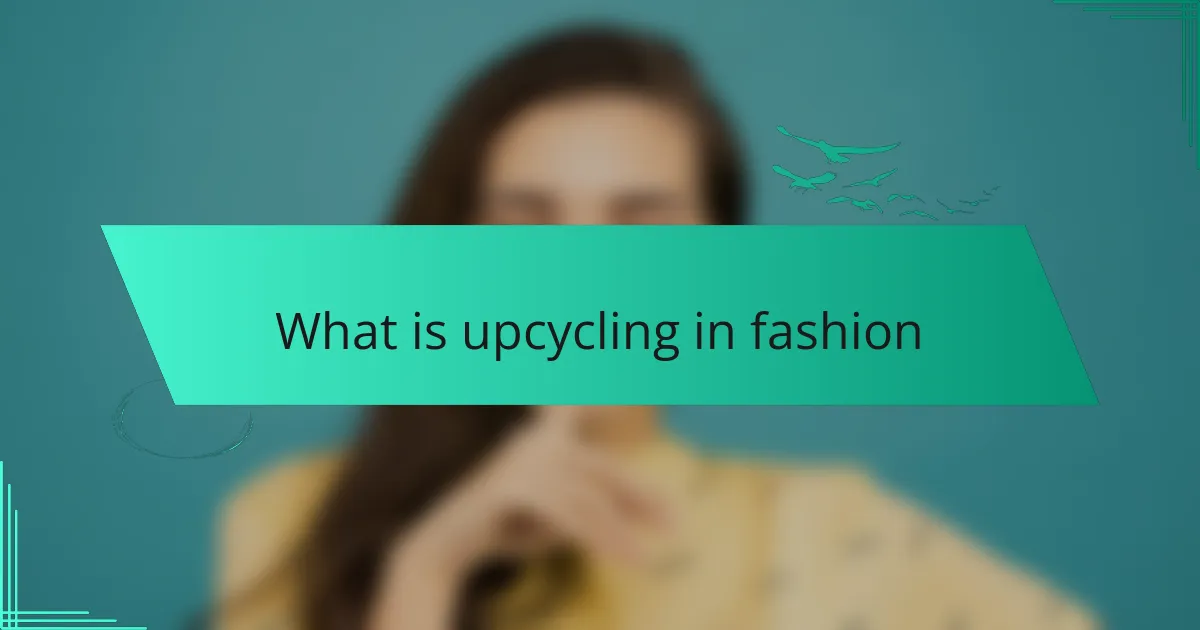
What is upcycling in fashion
Upcycling in fashion is a creative process that transforms old or discarded clothing into something new and wearable. I often find it thrilling to take a vintage piece, like a pair of Levi’s, and breathe new life into it. The emotional connection to the original fabric, combined with the excitement of crafting something unique, makes upcycling a truly rewarding experience.
What I love about upcycling is not just about being eco-friendly—it’s also about storytelling. Each piece carries history, and by repurposing it, I’m contributing to its narrative while making it fashionable again.
Here’s a quick comparison of upcycling versus traditional fashion production:
| Factor | Upcycling | Traditional Fashion |
|---|---|---|
| Environmental Impact | Low, promotes sustainability | High, often involves waste |
| Creativity | High, encourages personal expression | Variable, can be mass-produced |
| Cost | Generally low, depends on materials | Can be high due to production costs |
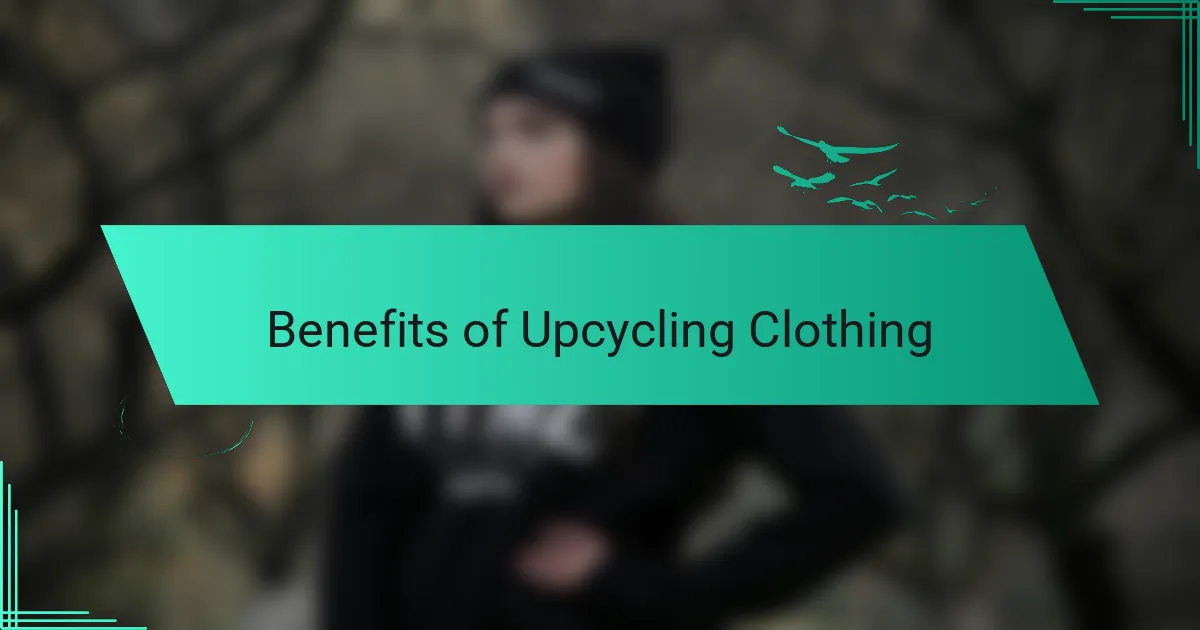
Benefits of upcycling clothing
Upcycling clothing comes with numerous benefits that extend beyond just the aesthetic. For example, I find immense satisfaction in knowing that I’m reducing waste with every piece I transform. Did you know that the fashion industry is a significant contributor to landfill waste? It’s a comforting thought to know my creative efforts are promoting a more sustainable approach to fashion.
Another aspect I appreciate about upcycling is its role in fostering creativity. When I work on pieces like my Levi’s jacket, I discover new ways to express my personal style, often experimenting with different designs and embellishments. This process not only enhances my wardrobe, but it also allows me to share a unique story through my clothing, making every item special.
Moreover, upcycling can be a budget-friendly alternative to buying new clothes. I can’t tell you how many times I’ve saved money by revamping items that would otherwise sit untouched. By breathing new life into old clothing, I create something fresh and stylish without breaking the bank—who wouldn’t want that?
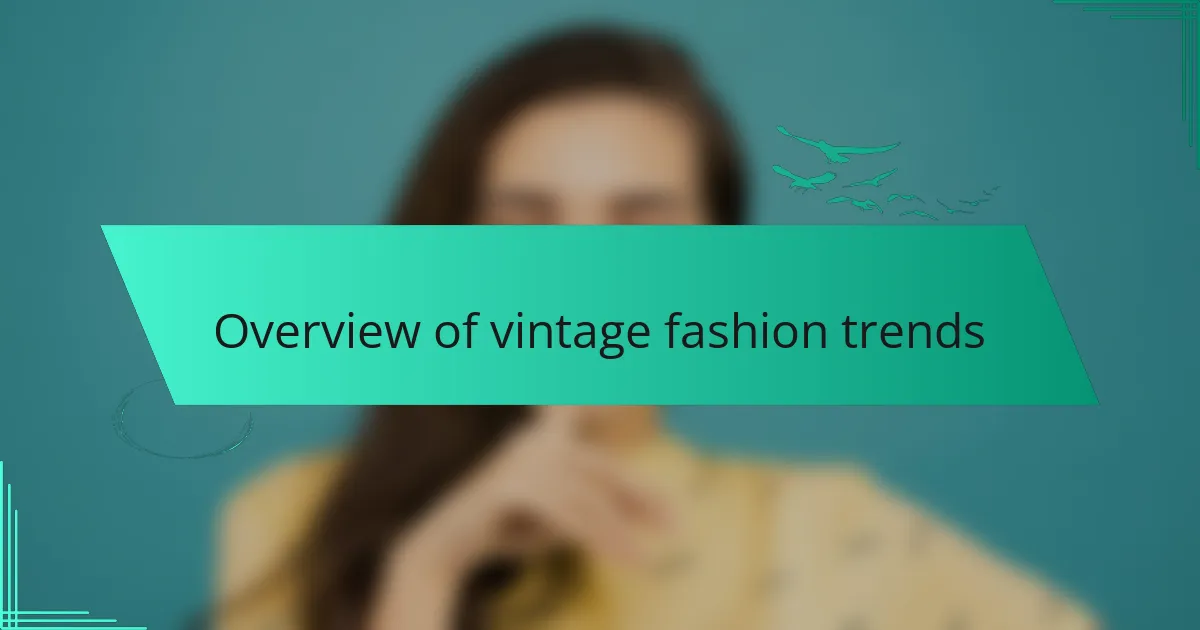
Overview of vintage fashion trends
When I think about vintage fashion trends, it fascinates me how they come full circle. Trends from the late 20th century are resurfacing, often with a fresh twist. For instance, the 90s grunge aesthetic, characterized by oversized flannel shirts and ripped jeans, is seeing a revival in today’s wardrobes, especially among DIY enthusiasts.
Upcycling plays a significant role in vintage fashion, breathing new life into old garments. I remember the first time I upcycled a pair of Levi’s—I felt a thrill transforming something that may have been discarded into a unique piece that reflected my style. This sense of creativity not only saves money but also contributes to sustainable fashion, which is increasingly important to many of us today.
Here’s a quick comparison of various vintage fashion trends and their modern interpretations:
| Vintage Trend | Modern Interpretation |
|---|---|
| Flared Jeans | Wide-Leg and Bootcut Styles |
| Grunge Aesthetic | Chunky Sweaters and Combat Boots |
| Bell-Bottoms | High-Waisted Trousers |
| Graphic Tees | Personalized and Statement Tees |
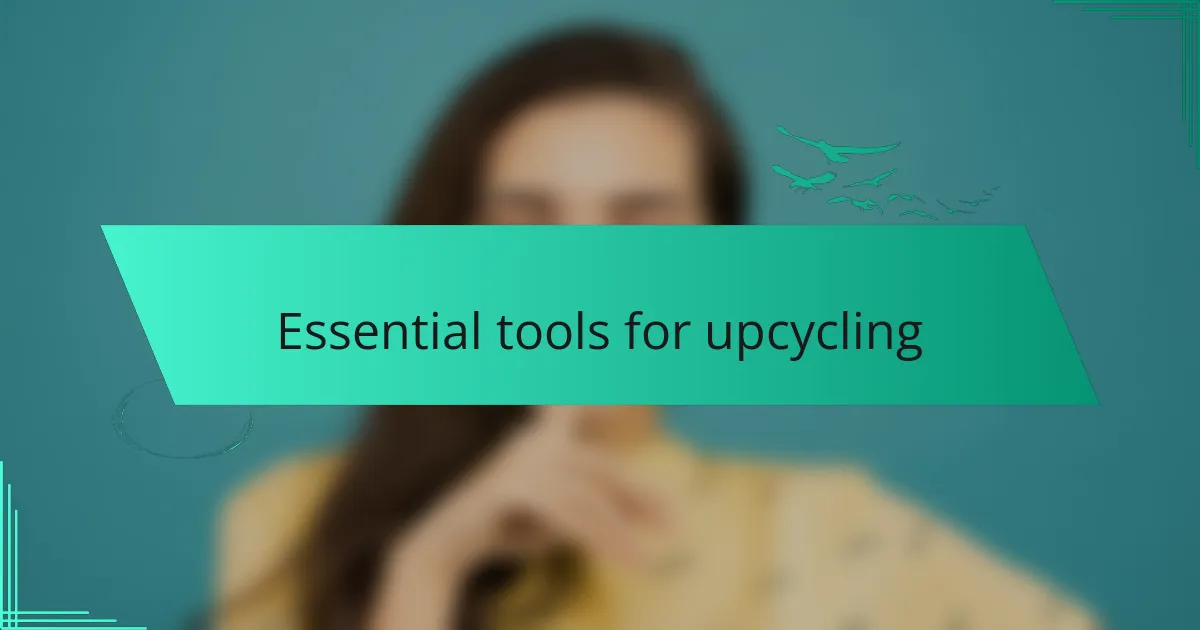
Essential tools for upcycling
When it comes to upcycling Levi’s into a jacket, having the right tools can make all the difference. I’ve always felt that having the right equipment not only simplifies the process but also sparks creativity. For instance, my trusty seam ripper has saved me countless times when I’ve needed to remove pockets or seams. It’s all about making sure you have the essentials on hand.
Another tool I can’t live without is a good pair of fabric scissors. They cut through denim like butter, allowing me to work quickly and efficiently. Once, during a project, I tried to use an old pair of scissors, and it turned into a frustrating experience. Investing in high-quality tools truly pays off in the long run and helps keep your inspiration flowing.
Here’s a handy comparison table of some essential tools you might need for your upcycling adventure:
| Tool | Purpose |
|---|---|
| Seam Ripper | To remove seams and pockets easily |
| Fabric Scissors | For precise cutting of denim |
| Sewing Machine | For strong and durable stitching |
| Measuring Tape | To ensure accurate measurements |
| Tailor’s Chalk | For marking fabric without permanent marks |
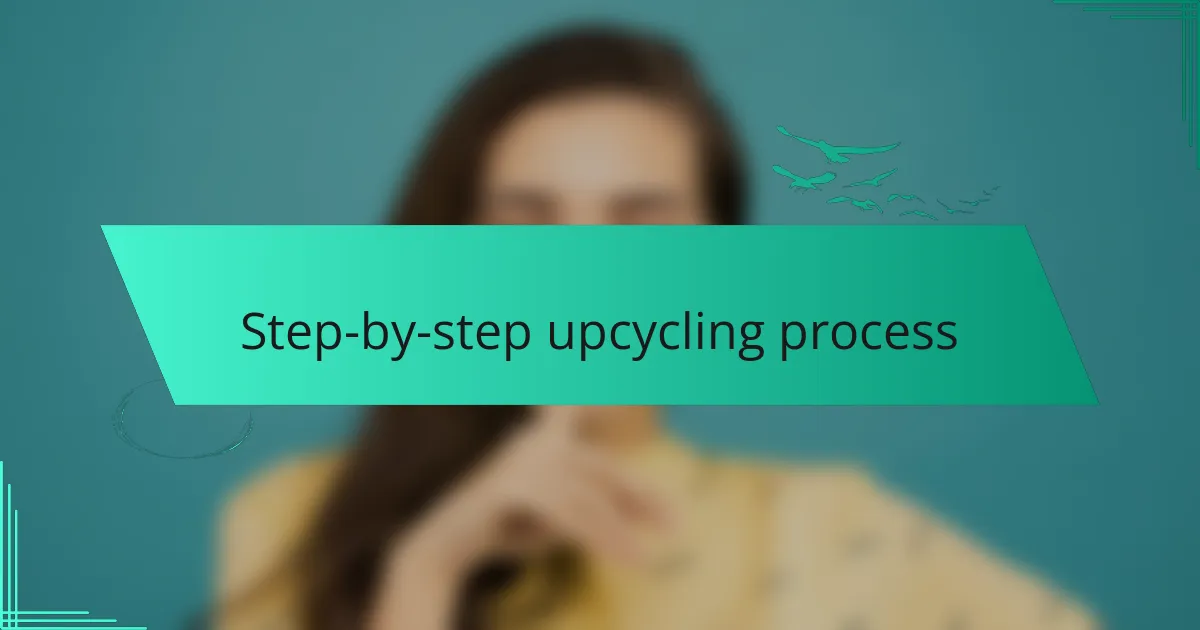
Step-by-step upcycling process
When I decided to upcycle my old Levi’s jeans into a stylish jacket, I was driven by both nostalgia and creativity. The first step is to gather your materials—jeans, scissors, a sewing machine, and thread. I remember feeling a rush of excitement as I laid everything out, knowing I was about to transform something old into something uniquely mine.
Next, you’ll need to cut the jeans into the right pattern. It’s a good idea to look at a jacket that fits you well to use as a guide. The process requires a bit of patience, but seeing the first pieces come together was incredibly rewarding. Here’s a step-by-step breakdown to guide you:
- Gather old Levi’s jeans and necessary tools: scissors, sewing machine, thread.
- Cut the jeans into jacket shapes, using a well-fitted jacket as a template.
- Pin the pieces together and try them on for fit before sewing.
- Sew the pieces together, focusing on seams and hems for a neat finish.
- Add any personal touches, like patches or embellishments, to make it truly yours.
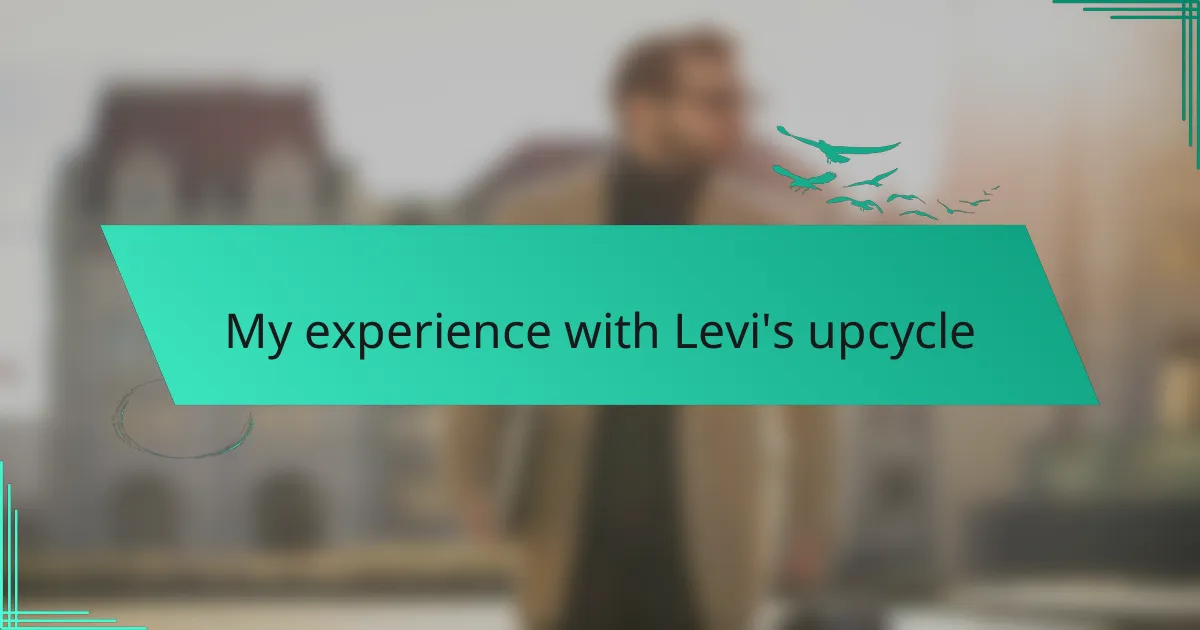
My experience with Levi’s upcycle
When I first ventured into upcycling Levi’s, I was drawn to the idea of transforming something old into something entirely new. I vividly remember the excitement I felt as I cut and stitched, pouring my creativity into every seam. The process was not without its challenges; there were moments of frustration, but each snag added character to the final piece.
I learned that upcycling isn’t just about the end result; it’s about the journey. Each stitch tells a story of my efforts and creativity, and that’s what makes the jacket truly special. It became not just an item of clothing but a unique representation of my personal style and commitment to sustainable fashion.
| Aspect | Original Levi’s |
|---|---|
| Condition | Worn and unique |
| Style | Classic denim |
| Impact on environment | Waste reduction |
| Personal touch | Custom and one-of-a-kind |
